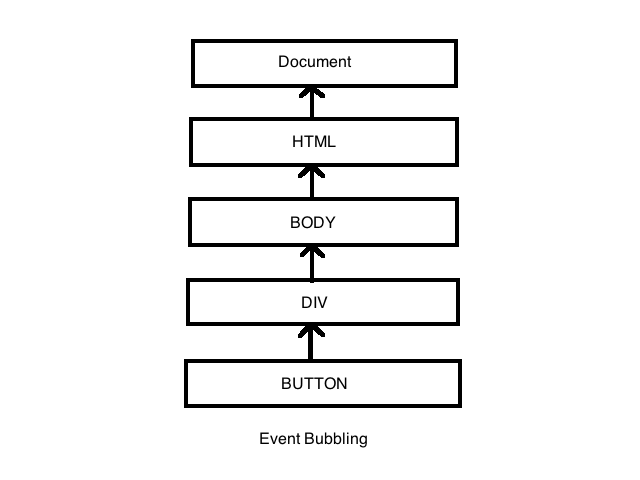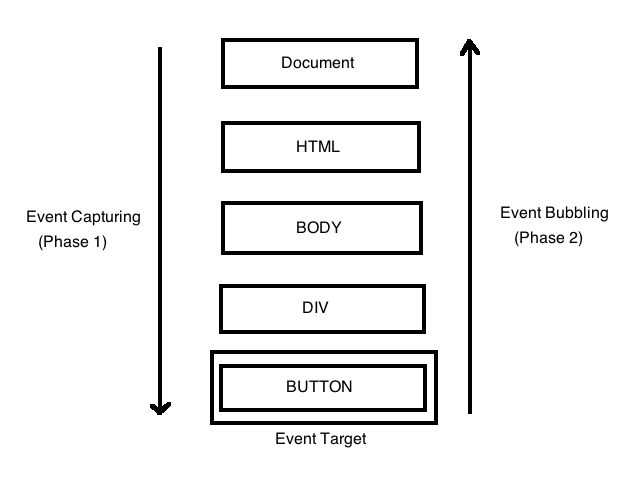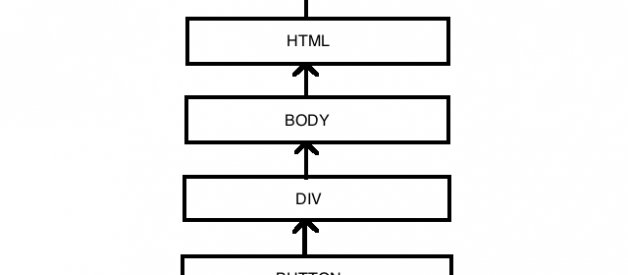Event Bubbling and Event Capturing is the most used terminology in JavaScript at the time of event flow. In the JavaScript, Event Flow process is completed by three concepts :
- Event Capturing.
- Event Target.
- Event Bubbling.
Events :
Events are responsible for interaction of JavaScript with HTML web pages. The general definition of event is any act can occur by someone. In the web development, the definition of events is also same. Events can be subscribed by listeners that occurs only when the particular event can be fired.
Basic example of event is click on button
Event Flow :
Event flow is the order in which event is received on the web page. If you click on an element like on div or on the button , which is nested to other elements, before the click is performed on the target element. It must trigger the click event each of its parent elements first, starting at the top with the global window object. By default, every element of HTML is child of the window object.
History of Event Flow :
In the Fourth Generation of Web browser War, main browser community, Internet Explorer 4 and Netscape Communicator 4 met with each other for searching the solution to the way of Event flow. Basically, both developer teams met with each other to discuss which way is more suitable for Event Flow. There are two ways Top to Bottom(Event Capturing) and other one is Bottom to Top (Event Bubbling). But unfortunately, both of them apply opposite approach. Internet Explorer 4 adopts the Event Bubbling approach and Netscape communicator 4 adopts Event Capturing approach.
Event Bubbling :
Event Bubbling is the event starts from the deepest element or target element to its parents, then all its ancestors which are on the way to bottom to top. At present, all the modern browsers have event bubbling as the default way of event flow.
Consider an example on Event Bubbling :
Event Bubbling Running example of Event Bubbling
Running example of Event Bubbling
Code Elaboration :
- In the above code we can create a html file with some line of HTML code and JavaScript Code.
- In the HTML, we can create a div with id parent. and its nested button element with id child.
- In the Javascript code, Firstly we can assign the html element to the variable with the help of document.querySelector() function
- After that we can attach, a click event to parent div and child button also. and both of function just print the strings value on the console by the use of console.log().
- When we click on the button first run the function which is attached on button , after that onclick() function of div runs. This is due to Event bubbling. First run the event which is attached with event target then its parents on the way to window object.
When you click on the button, the event passes from inner event target (Button whose id is the child) to Document. Click event pass in the following order:
- <button>
- <div>
- <body>
- <html>
- document

Stop Event Bubbling :
If you want to stop the event bubbling, this can be achieved by the use of the event.stopPropagation() method. If you want to stop the event flow from event target to top element in DOM, event.stopPropagation() method stops the event to travel to the bottom to top.
Stop Event Bubbling
Code Elaboration :
- In the above code we can create a html file with some line of HTML code and JavaScript Code.
- In the HTML, we can create a div with id parent. and its nested button element with id child.
- In the Javascript code, Firstly we can assign the html element to the variable with the help of document.querySelector() function
- After that we can attach, a click event to parent div and child button also. and both of function just print the strings value on the console by the use of console.log().
- One additional task is that we can attach the event.stopPropagation() to stop the event bubbling. In this code, we can add event.stopPropagation() with button to stop the travel of onclick event from bottom to top. Due to this when we click on button console prints only ?child clicked?. Event not pass from event target to document of webpage.
Event Capturing :
Event Capturing is the event starts from top element to target element. Modern browser doesn?t support event capturing by default but we can achieve that by code in JavaScript.
Event Capturing Event Capturing
Event Capturing
Code Elaboration :
- In the above code we can create a html file with some line of HTML code and JavaScript Code.
- In the HTML, we can create a div with id parent. and its nested button element with id child.
- In the Javascript code, Firstly we can assign the html element to the variable with the help of document.querySelector()function
- After that we can attach, a click event to parent div and child button also. and both of function just print the strings value on the console by the use of console.log().
- We can use third optional argument of addEventListner to set true to enable event capturing in the parent div.
- When we click on the button first run the function which is attached on div , after that onclick function of button runs. This is due to Event Capturing. First run the event which is attached with parent element then event target.
When you click on the button, the event passes from parent (document) to event target(Button whose id is the child). Click event pass in the following order:
- document
- <html>
- <body>
- <div>
- <button>

Full View of Event Flow :
Every event flow has three phase:
- Event Capturing
- Event Target
- Event Bubbling.
In the event flow, Event target has two phases one is at the end of event capturing and starting of event bubbling.

Conclusion :
Event Bubbling and Event Capturing is the foundation of event handler and event delegation in JavaScript. In this article , we can give conceptual knowledge of event bubbling and event capturing. If you have any doubts please comment below and email me on [email protected].


